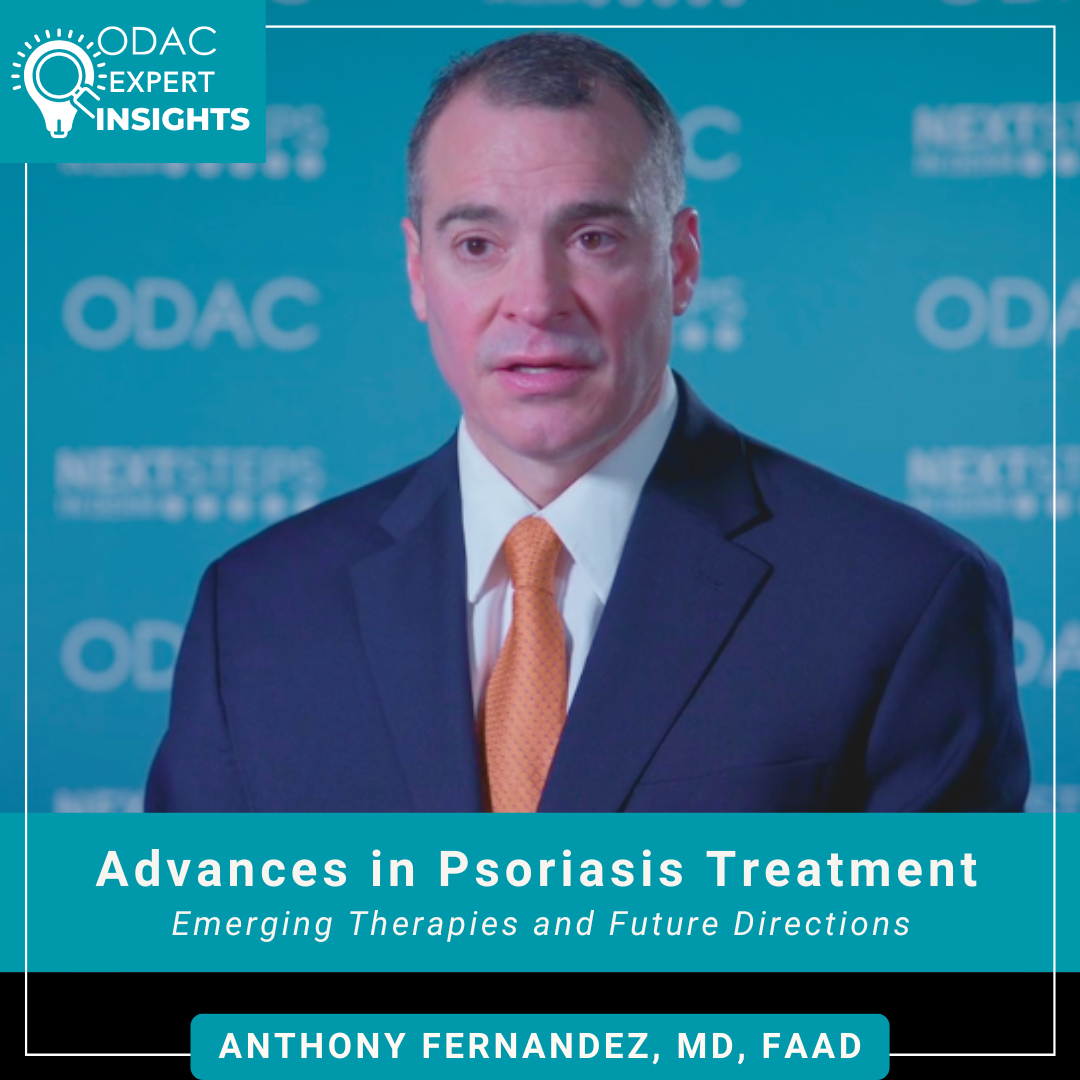The psoriasis research pipeline is rich with new medications as well as new ways to use existing therapies, according to Dr. Anthony Fernandez, director of medical and inpatient dermatology at the Cleveland Clinic. Next Steps in Derm, in partnership with the ODAC Dermatology Conference, interviewed Dr. Fernandez, who outlined three therapeutic areas he’s most excited about in the treatment of psoriasis. Watch and learn about new nanobody treatments. Hear the results from the KNOCKOUT study that used a higher initial dose of risankizumab with impressive results. Plus find out how this study’s approach may impact the future of psoriasis research.
Further Reading
If you want to read more about treating psoriasis, check out the following articles published in the Journal of Drugs in Dermatology:
Structural Insights: What Makes Some IL-23 Biologics More Effective in Psoriasis
ABSTRACT
Psoriasis is a chronic inflammatory skin disease affecting over 7.5 million adults in the United States, and over 41 million people worldwide. Among the key players in its pathogenesis is the cytokine interleukin (IL)-23, making it a prime target for biologic therapies. IL-23 is a heterodimer composed of the p19 and p40 subunits. The biologics that target IL-23, such as risankizumab, tildrakizumab, and guselkumab, focus on the p19 subunit, while ustekinumab targets the p40 subunit. In this brief review, we discuss the findings of a study by Daniele SG et al, published in JID Innovations in 2024, which analyzes the structural properties of these IL-23 biologics and thereby provides a molecular rationale as to why risankizumab stands out as highly efficacious in psoriasis.
ABSTRACT
Background: Guselkumab is a monoclonal antibody approved for treating moderate-to-severe plaque psoriasis. Long-term data on the effectiveness and safety of guselkumab in a real-world setting are still limited.
Materials and Methods: We conducted a 104-week monocentric retrospective study on 102 psoriasis patients, all treated with guselkumab for at least 16 weeks. At each visit, we used the Psoriasis Area and Severity Index (PASI): effectiveness endpoints were the percentages of patients achieving 75%/90%/100% (PASI 75/90/100) improvement in PASI compared with baseline. The Kaplan-Meier curve was used to assess the drug survival.
Results: At week 16, PASI 90 and PASI 100 were achieved by 49.02% and 32.35% of patients. At week 52, PASI 90 and PASI 100 were achieved by 71.58% and 55.79% of patients. After 2 years, PASI 90 and PASI 100 were achieved by 79.63% and 61.11% of patients. Obese and overweight patients had comparable PASI 90 and PASI 100 responses throughout the study. At week 104, no significant differences were observed between bio-naïve and bio-experienced patients regarding all effectiveness endpoints. No significant safety signals were reported in our study. After 24 months, 91.57% of our cohort was still on treatment with guselkumab.
Conclusion: Our findings, although limited by the study’s retrospective nature, confirm that guselkumab is a safe and effective therapeutic option for a “real-life” cohort of patients with psoriasis.
Did you enjoy this video interview? Find more here.

